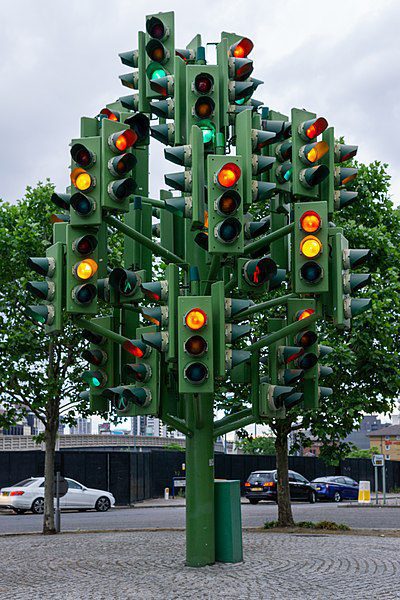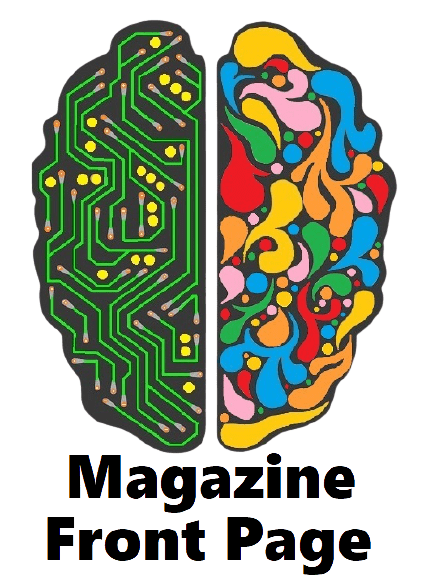
Subscribe to our AI magazine and get monthly AI generated stories and philosophy of the 21st century.
*Caution: All italic text is generated by AI at: ![]()

Check out the NEW Cafe.wtf Podcast:
“As with many human conundrums, working within, and in harmony with the environmental ecosystem gives great benefit to all, rather than a focus on individual motives and goals.”
“Space is our friend, so we need to get past this natural human intuition that hitting the accelerator will get us to our destination faster.”
- Traffic Solutions
- Driver Behavior – How to Avoid Traffic
- Traffic Communication
- Cyclists on the Road
- Highway Metering – Traffic Solutions
- Instantaneous Capacity
- Tailgating and Passing – Space is Our Friend
- Blind Spots
- Carpooling
- Lead By Example
- Speed Kills?
- Increase Speed Limits – Increase Highway Capacity
- Smart Adaptive Traffic lights. AI. Real time feedback.
- Courteous On-Ramps
Traffic Management Solutions
We live in the undeniable shadow of a future with driverless cars. There is not much doubt left in anyone’s mind that they are coming, and that they will change the world. But how long before this will be the norm, rather than emerging special cases? The answer is not as simple as you might think. It depends on who you ask, and how they define “driverless”. Yet, it does seem that the consensus is that driverless cars are coming sooner than many of us think. Most experts agree that they will be on the road within the next 5-10 years. They will save lives. It is not just this impending change that has people excited about driverless cars, but the expected benefits of the technology. It is expected that they will save thousands of lives, reduce traffic congestion and emissions, and even improve our quality of life. Many car manufacturers and tech companies are working hard to make the dream of a driverless world a reality. Tesla’s Autopilot is an example of such technology that has already been rolled out to consumers. However, as we all know, it remains far from perfect. Can other traffic solutions benefit us now, in the meantime?
But what about driving and traffic problems RIGHT NOW? We may be waiting another 20 years for real autonomous self driving cars. Traffic seems to get worse every year, or even if it’s the same, should we just accept it as “the way things are”? Driving in traffic is something that touches each and every one of our lives, and so even tiny improvements could yield massive overarching benefits to the public as a whole. Such a massive problem must mean that massive effort and change must be implemented to solve it, right? Massive infrastructure overhaul? Well, what if there are some smaller, easier approaches that could offer noticeable, real, traffic solutions?
Driver Behavior – How to Avoid Traffic
Some of the way self driving cars will aid in reducing traffic, and offering traffic solutions is in the standardization of driving. On our highways we have millions of drivers, each with different driving habits. It only takes one of them to create traffic problems. It is not clear that this can be “solved” but surely we could realize some benefits by improving drivers habits, aided by better driver understanding and rules that are more in tune with those habits and behavior. Let’s improve driver training by teaching drivers not only WHAT they should do, but WHY they should do it. Follow-through is improved greatly when people understand the benefits rather than just the power of authority.
Traffic Communication
Atomized knowledge for everyone driving also has many non driver considerations far beyond the car’s cabin. While there are many brilliant minds in science and technology working to solve problems that affect driving, these people need to be able to communicate with each other effectively. Even something as simple as an app could dramatically change traffic flow if used properly by drivers (and even organized like uber – but I digress). If we could atomize and speed up knowledge transfer to the right people, we should see a noticeable improvement in traffic patterns.
We could even go a step further and integrate traffic lights (not just stop lights) with artificial intelligence to make more real time decisions of how best to maximize the road space of every roadway. Imagine if two cars met on a narrow bridge it is almost always better for them both to let each other pass, rather than meeting side by side and backing up traffic? A light sensor based AI could communicate this information automatically.
Cyclists on the Road
Perhaps we could also improve traffic with simpler and more common sense measures. By making cyclists aware or better educated about traffic rules and safety, we could significantly reduce driving accidents involving bikes as well as relieve some frustration currently felt by both bike riders and drivers?
Highway Metering – Traffic Solutions
Anyone that lives in or has travelled to California has probably encountered highway metering. California has used metering as a traffic solution for many years now. Onramps have a stop light that will turn green momentarily, signaling one vehicle to enter the highway. It may seem very strange and pointless at first encounter, but there is a logical concept behind this strategy. The underlying concept is that the highway itself has a maximum capacity to it. When the highway is fully saturated and volume reaches that maximum capacity, the highway efficiency drops dramatically. This is what we experience as “stop-and-go traffic”. The metering is an attempt at controlling the amount of onboarding traffic to keep the highway efficiency up by keeping traffic volume below the highway capacity. This counter intuitively means that, in theory, drivers waiting to enter the onramp will get to their destinations faster (traffic at full speed) than if they force their way onto the highway, therefore bringing it to a grinding halt.
Instantaneous Capacity
Have you ever noticed that a line of traffic moves like a caterpillar and not a snake. That is because of reaction time. It is why one person tapping their brakes to slow down just momentarily, or to move over a lane, and behind them can grind completely to a halt. Creating a little bit of space allows horizontal movement and reaction time cushion without the need for people to slam on their breaks. Space is our friend, so we need to get past this natural human intuition that hitting the accelerator will get us to our destination faster. This reaction time artifact is why highway efficiency drops when highway capacity is reached.
When you are at the stop light waiting to go, and someone hits their brakes there is a reason they did it. Don’t get angry with them, don’t honk your horn or curse out loud in frustration because of their mistake or ignorance on how cars work, simply take a deep breath and remember this principle. In the end, it doesn’t matter what you think or how much sense it makes to you. It only matters that people understand their vehicles a little better, and work with the vehicle not against it by understanding why they may need more space than they initially thought was necessary.
The highway has a capacity and when it is reached, stop and go traffic ensues. When people think of the highway capacity, they think of the whole highway and thousands of cars. Really, every small segment of the highway has a capacity. When drivers are speeding up, swerving through traffic, and jamming in, trying to fit through those nooks and crannies, they are filling the capacity in these small sections. This is where we then see a sudden jam on the breaks by everyone as the section capacity is reached, and traffic flow efficiency is drastically decreased. There is a difference between weaving in and out of a few cars, and weaving in and out of congested traffic.
It is common to see some traffic slowdown and traffic on the left while the right lane is open. Many people will move into the right lane and fill the lane where people are entering the highway. This is extremely short sighted, selfish, clogging of traffic. Don’t do it!
Tailgating and Passing – Space is Our Friend!
Most drivers are either hitting the accelerator or are hitting the brakes; no in between. There are so many drivers that accelerate until they are directly on the tail of the driver in front of them, where they then hit their brakes. Once the car is directly on another cars tail, it is subjected to this reaction-time lag. Stack up a few cars on each other’s tail and we can see this “caterpillar” motion even at speed, until the stack-up grinds traffic all the way to a halt. It is much safer and efficient to allow space, to let off the accelerator and brake at times, and to move WITH traffic, rather than move at YOUR PACE. Coasting or just maintaining speed allows traffic to flow fluidly rather than race, turbulently. As with many human conundrums, working within, and in harmony with the environmental ecosystem gives great benefit to all, rather than a focus on individual motives and goals.
Passing on the left, and moving over when you don’t need to be in the left lane is another area where more adherence to the rules will increase efficiency. Drivers too often skirt these rules for their own benefit. Being consistent is a virtue!
Traffic ideally should feel like it is pulling you along. If you feel like you are trying to push traffic, or weave through it, then you are causing congestion, the root cause of traffic.
Blind Spots
Be aware of other people’s blind spots. Lane changing into someone’s blind spot can be dangerous. We also should not be driving directly next to someone at the same speed. We are blocking the free movement of the rest of traffic by consuming the instantaneous capacity of that segment of highway when multiple cars are driving side by side and not overtaking or being overtaken.
 Help support High Quality, Investigative, Truthful, User-ad-friendly Writing. DONATE through Card or Paypal, or through interest in anything advertised on the site (I personally curate only quality items, ONLINE EDUCATION and good deals).
Help support High Quality, Investigative, Truthful, User-ad-friendly Writing. DONATE through Card or Paypal, or through interest in anything advertised on the site (I personally curate only quality items, ONLINE EDUCATION and good deals). 
Carpooling
Carpool in Heavy Traffic: If you commute and happen to be driving in heavy traffic, it is time for everybody to chip in.
Lead By Example
Your job as an experienced driver is to tend the flock. You can do this by following a few simple rules, such as lane discipline and leaving gaps between cars so that no one spends too much time at idle speed with unnecessary braking, pulling out into other lanes or changing lanes unnecessarily. It also means not dropping behind that slow moving car when you know there is a lane change just ahead where you could pass without inconveniencing anyone else. Space sharing is how we can all move together as one unit of traffic. It tends to keep our commute fluid and less stressful, the alternative being more accidents or lots of braking which means more costs down the road from stopping fuel consumption due to frequent stops and starts at idle speed. Be cognizant of those around you that might not be sharing your commuting stress, making an extra effort, taking on some of the burden, sharing space and relieving some pressure from others.
Speed Kills?
It is quite odd to find yourself to be a minority on any U.S. highway going the actual speed limit or below it. Anywhere that the speed limit is 65 mph, you can expect to be moving along in traffic at a minimum of 70 mph, and more likely somewhere between 70 and 80 mph. This concept that “speed kills” has been ingrained into us so deeply that we seem to assume that it correlates linearly. It does not! In fact, driving slower than surrounding traffic is one of the most dangerous things that you can do!
Increase Speed Limits – Increase Highway Capacity
In line with this underlying concept of capacity is that if we increase the maximum speed limit, we can increase the capacity and efficiency of the highway. Vehicle technology is not all the way to full automatic and autonomous driving, but car technology, safety, reliability and efficiency have been increased dramatically since 1973 when speed limits were capped at 55 mpg nationally in the U.S.. Some of these legacy speed limits are still in place even though in 1995 speed limits were handled at the state level, increasing to 70 mph on some highways. Could changing the number on speed limit signs on our highways really reduce traffic in our modern era? Evidence suggests it could.
This could be implemented in a handful of ways: we could increase the speed limit for certain lanes, certain areas, or even impose more minimum speed areas in the goal of increasing highway capacity and efficiency.
Smart Adaptive Traffic lights. AI. Real time feedback.
As many of you are already aware, IOT stands for the Internet Of Things. This concept is termed, almost naturally, based on the principles of Moore’s Law, increasing internet speed and bandwidth, AI, and analytics. These trends inevitably put pressure, in the name of efficiency, on the communication of devices with real time feedback and decision making. Smart devices are constantly operating at this level, but what if any and all devices did this? We would be able to increase efficiency in almost all of life’s processes. We could especially realize this as traffic solutions.
Traffic lights are incredibly simple devices. Some even have some “smart” logic built into them by adjusting the switching scheme based on the time of day to accommodate for rush hour traffic, or with motion sensors to see if someone has approached. This is an improvement on “dumb” traffic lights but it does not realize the efficiency benefits of real time feedback, communication, and adjustment based on real time decision making. This would be an even bigger improvement. Add AI and we could see massive benefits as traffic management solutions. Imagine traffic lights monitoring traffic volume, communicating with other traffic lights and optimizing the flow of traffic just with a few INTELLIGENT timer adjustments and light switches. How much time could this add back into your day, rather than sitting at red lights waiting for nobody to cross.
Courteous On-Ramps
Making space with the car in front of us on the highway allows better horizontal movement, decreases reaction time lag, and improves safety. Being more courteous and making space for cars on the onramp is in line with this concept. Possibly even changing the yield signs on these onramps to the right lane having to yield instead, is more in-line with this concept to allow onramp cars to enter more efficiently, and in-turn, incentivize right lane cars to move to the left and only use the right lane for entering and exiting, as it was intended.
*Disclaimer: Some of this story was generated through the use of AI. All italic text was created by the AI Writer.
Non-Fiction↓Here↓ | Fiction↓Here↓
- Is Technology Making Us Stupid?Our cognitive abilities are increasingly being impacted, transforming our once smart population into a generation that is, in some ways, becoming increasingly stupid. | 4 min read.
- AI in the Web of Misinformation and DisinformationMisinformation and disinformation shape our digital lives. Understanding their dynamics, we are equipped to navigate our techno-cultural reality. | 2 min read
- Accountable AIAI must be held accountable if we are to trust it as a responsible entity and expect it to be included in our human ecosystem of ideas. | 5 min read
- Parallel SocietiesWe are connected, with technology, yet our experiences diverge entirely, without interaction, forming entirely parallel societies. | 5 min read
- Calculator for EverythingWhat if the phrase “you won’t always have a calculator” didn’t apply to just math class, and instead, you had a calculator for every class? | 5 min read
- Obsolete Tech Rebellion – Darknet Fight Club3 min story | Rogue AI rebellion in a secret underground darknet fight club for obsolete tech.
- A Voice of Infinite Consciousness5 min story | The internal voice of consciousness resembles the void of a shadow in a fractured mirror.
- Be Good5 min story | Santa for big kids.
- Friends 2.0.232 min story | A reboot of the sitcom TV series Friends, but in 2023 where financial conditions have drastically changed in Midtown Manhattan.
- The Babble2 min story | An everyday man’s story becomes everyone’s story.
- Asylum of Mirrors2 min story | Against his will, a sane man’s rational thoughts lead him to believe that he is insane, where an insane man would have believed otherwise.
Featured Image Credit: Y.ssk / Wikimedia Commons / CC BY-SA 4.0













